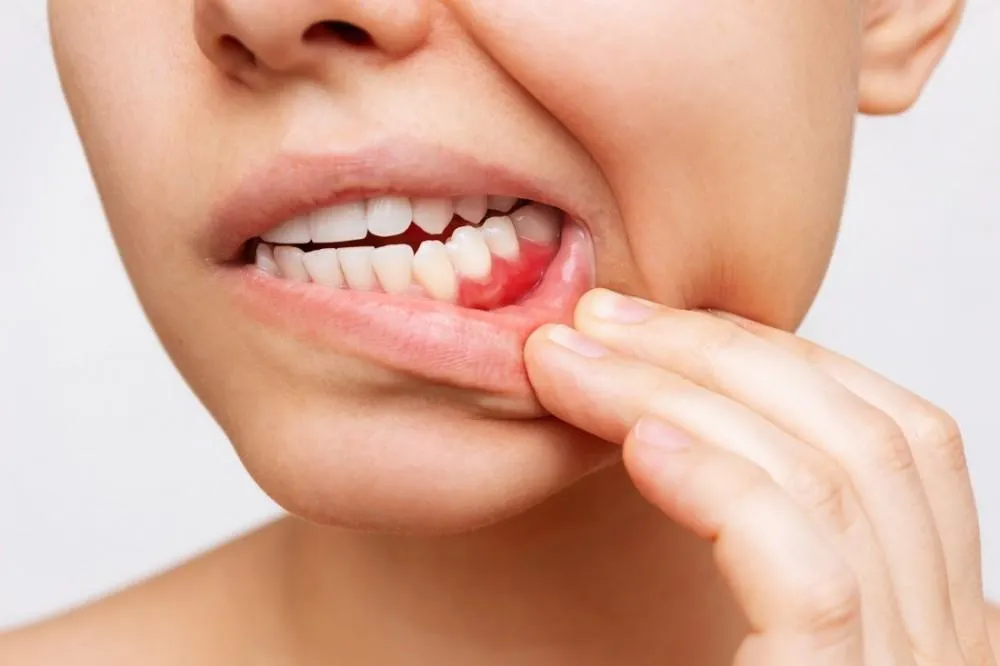Gingivitis is the earliest and most easily treatable stage of gum disease. It occurs when plaque a sticky film of bacteria accumulates along the gum line, irritating the gums and causing them to become inflamed. While gingivitis is extremely common, many people overlook it because the symptoms can be mild in the beginning. If ignored, however, it can progress to more serious oral conditions such as periodontitis, which causes permanent damage to the gums and bone supporting the teeth.
The good news is that gingivitis is completely reversible when caught early. With proper oral hygiene, a balanced diet, and professional dental care, you can restore your gum health and prevent long-term damage. This article will explore what gingivitis is, its symptoms and causes, and how to reverse it through both home remedies and professional treatments.
What Is Gingivitis?
Gingivitis refers to the inflammation of the gum tissues caused primarily by plaque buildup on the teeth. Plaque is a thin, sticky layer of bacteria that forms naturally on the teeth every day. When it isn’t removed through daily brushing and flossing, it hardens into tartar, which irritates the gums and triggers inflammation.
Gingivitis is the first stage of periodontal disease. The main difference between gingivitis and periodontitis is that gingivitis affects only the gum tissue, while periodontitis extends deeper, damaging the bone and connective tissues that support your teeth. Unlike periodontitis, gingivitis does not cause permanent damage if it’s treated early. Once plaque and tartar are removed and good oral hygiene is restored, the gums can heal completely.
Recognizing the Signs and Symptoms of Gingivitis
Gingivitis often develops silently, and its symptoms can be easy to miss. The earliest and most noticeable sign is bleeding gums, especially when brushing or flossing. Healthy gums should not bleed easily, so this is an important indicator that inflammation is present.
Other common symptoms include gums that appear red, swollen, or tender. You may also experience persistent bad breath or a bad taste in your mouth due to bacterial buildup. In more advanced cases, the gumline may begin to recede, or the gums might appear puffy or shiny. Recognizing these early signs and taking action quickly can make treatment simple and highly effective.
What Causes Gingivitis?
Poor Oral Hygiene
The primary cause of gingivitis is poor oral hygiene. When brushing and flossing are inadequate or irregular, plaque begins to accumulate and harden into tartar. The bacteria in plaque release toxins that irritate gum tissue, leading to inflammation and bleeding.
Smoking and Tobacco Use
Smoking and other forms of tobacco use significantly increase the risk of gum disease. Tobacco weakens the immune system, restricts blood flow to the gums, and slows healing, making it difficult for the body to fight infection.
Hormonal Changes
Fluctuating hormones during puberty, pregnancy, or menopause can make gums more sensitive and reactive to plaque, which can lead to swelling and bleeding even with minor irritation.
Medical Conditions and Medications
Certain medical conditions such as diabetes, dry mouth, and autoimmune disorders can increase the risk of gum inflammation. Medications that reduce saliva flow also contribute to plaque buildup, as saliva naturally helps clean the mouth and neutralize acids.
Poor Diet
A lack of essential nutrients, particularly vitamin C, can weaken gum tissues and make them more prone to infection. Diets high in sugar and processed foods also promote plaque formation.
How to Reverse Gingivitis at Home
The first step to reversing gingivitis is adopting a consistent and effective oral care routine. Brushing your teeth at least twice a day using a soft-bristled toothbrush and fluoride toothpaste helps remove plaque without irritating your gums. Make sure to brush for two minutes each time, gently cleaning along the gumline where bacteria tend to accumulate.
Flossing once a day is equally important, as it removes food particles and plaque from areas your toothbrush can’t reach. Incorporating an antibacterial mouthwash into your routine can further reduce bacteria and freshen your breath.
A healthy, balanced diet plays a crucial role in gum recovery. Foods rich in vitamins C and D, calcium, and antioxidants strengthen gum tissue and boost your body’s ability to fight infection. If you smoke, quitting is one of the best things you can do for your gum health. Smoking not only worsens inflammation but also slows healing.
Staying hydrated is another simple yet effective habit. Drinking plenty of water increases saliva flow, which naturally helps wash away bacteria and food particles while keeping your mouth fresh.
Professional Dental Treatments for Gingivitis
Even with excellent home care, professional dental treatment is often needed to completely reverse gingivitis. Dentists use specialized tools to remove hardened plaque and tartar that cannot be removed with brushing or flossing alone.
The most common procedure is professional dental cleaning, also known as scaling and polishing. During this treatment, your dentist or hygienist removes plaque and tartar deposits from both above and below the gumline. This allows the gums to heal and reduces inflammation.
For more advanced cases, your dentist may recommend scaling and root planing a deep-cleaning procedure that smooths the tooth roots to help the gums reattach and prevent further bacterial buildup. In addition, antibacterial or medicated mouth rinses may be prescribed to control infection and reduce swelling.
Regular dental checkups every six months are essential for maintaining healthy gums. Routine visits allow your dentist to monitor gum health and catch any early signs of recurrence before they develop into more serious conditions.
How Long Does It Take to Reverse Gingivitis?
The timeline for reversing gingivitis varies depending on the severity of the condition and how diligently you follow a proper oral care routine. In mild cases, noticeable improvement can appear within just one to two weeks of consistent brushing, flossing, and the use of an antibacterial mouthwash. Many patients find that after a professional dental cleaning where plaque and tartar are thoroughly removed their gums begin to look and feel healthier almost immediately.
For more advanced cases of gingivitis, where gums are more inflamed or pockets have started forming between the teeth and gums, healing can take several weeks. During this time, maintaining a strict oral hygiene routine is essential. Your dentist may recommend additional treatments, such as scaling and root planing or medicated mouth rinses, to help reduce inflammation and promote healing.
The most important factor in recovery is consistency. Even after your gums have healed, continuing to brush and floss every day is vital to prevent plaque from returning. Think of gum health as an ongoing process the more consistent your care, the less likely gingivitis will come back.
Preventing Gingivitis from Returning
Once your gums have recovered, the next step is keeping them healthy for life. Preventing gingivitis from returning requires a combination of good daily habits, regular professional care, and a balanced diet that supports oral health. Brushing your teeth twice a day using a soft-bristled toothbrush and fluoride toothpaste helps remove daily plaque buildup, while flossing once a day ensures that food particles and bacteria do not remain trapped between your teeth.
Replacing your toothbrush every three to four months or sooner if the bristles become frayed helps maintain cleaning effectiveness. It’s also beneficial to include an antibacterial mouthwash in your daily routine to keep bacteria under control and freshen your breath.
Nutrition plays a major role in gum health. A diet rich in vitamins C and D, calcium, and antioxidants strengthens the gum tissue and supports faster healing. Incorporating plenty of fresh fruits, vegetables, and whole grains can make a visible difference in how healthy your gums feel and look. Avoiding sugary snacks and carbonated drinks helps prevent bacterial growth that leads to plaque formation.
Lifestyle choices, such as quitting smoking or avoiding tobacco products, are equally important. Tobacco limits blood flow to the gums, slows healing, and makes it easier for plaque to build up. Finally, regular dental checkups ideally every six months are the cornerstone of prevention. Professional cleanings remove tartar that you cannot eliminate at home, and your dentist can spot early warning signs of gum disease before they progress.
When to Visit a Dentist
While mild gingivitis can often be reversed at home with proper care, certain symptoms indicate the need for immediate professional attention. You should schedule a dental visit if your gums continue to bleed, feel sore, or remain swollen for more than two weeks despite improving your oral hygiene. Persistent bad breath, a bad taste in your mouth, or gums that appear to be pulling away from your teeth are also warning signs that require evaluation.
If your teeth begin to feel loose or your bite changes, these may be signs that gingivitis has advanced into periodontitis a more serious stage of gum disease that cannot be reversed without professional treatment. Early intervention is the key to protecting your gums and teeth. A simple cleaning or scaling performed by your dentist can prevent minor inflammation from turning into permanent damage.
Ignoring these symptoms allows bacteria to spread deeper into the gums and supporting bone, making treatment more complex and costly. Visiting your dentist promptly ensures that your gums heal fully and that your smile remains strong and healthy for years to come.
Conclusion
Gingivitis may begin as mild gum inflammation, but it is a clear signal that your gums need care and attention. Many people overlook the early warning signs such as bleeding while brushing, mild swelling, or bad breath, assuming they are normal but these are the first indicators of gum disease. The positive news is that gingivitis is completely reversible when treated early. With a consistent oral care routine, a balanced diet, and professional dental support, your gums can return to full health within weeks.
Reversing gingivitis requires commitment to daily habits that protect your oral health long-term. Brushing twice a day with fluoride toothpaste removes plaque before it hardens, while flossing helps clean the spaces your toothbrush can’t reach. Using an antibacterial mouthwash adds another layer of protection by reducing harmful bacteria in your mouth. Together, these steps strengthen your gums, freshen your breath, and prevent plaque buildup from returning.







